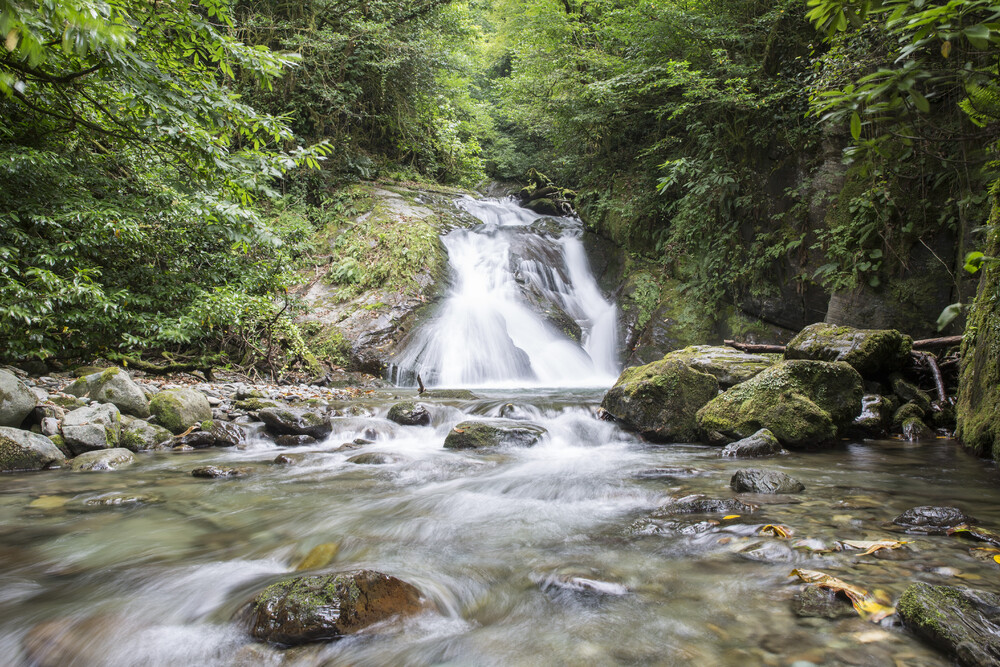
Colchic Rainforests and Wetlands
01/01/2025 - 31/12/2025

01/01/2025 - 31/12/2025
Tusheti – hidden in the Caucasus Mountains is the treasure of Georgia. The mysterious part is different from all the other sides of Georgia, its nature is diverse and enchants tourists. Tusheti Natoinal Park is the best place to arrange picnic. Tushetian cuisine is unique, do not miss chance to taste Tushetian cheese and take part in bow and arrow competitions during folk festivals. Tushetian culture is unique. Tushetian sheep, horse, Tushetian cheese are the main words that come mind while speaking about Tusheti. Tusheti is rich with biodiversity.
Read More...Day tour to Georgian Military Highway is an amazing trip to one of the most picturesque regions of Georgia known as Kazbegi region.
Read More...Harvesting is strictly related to weather conditions, and if weather conditions do not allow us to continue the regular collection of grapes, we will arrange for you an alternative solution to get the best from the day. Therefore, our route for this tour should be flexible, no fixed dates, just a promise of excellent wine tasting and delicious food combined with a trip to some of the most beautiful parts of Georgia at the time that suits you. Be part of an exciting wine day.
Read More...Preserved by its long isolation, the Upper Svaneti region of the Caucasus is an exceptional example of mountain scenery with medieval-type villages and tower-houses. The village of Chazhashi still has more than 200 of these very unusual houses, which were used both as dwellings and as defence posts against the invaders who plagued the region.
Read More...One-day tour to David Gareja monastery complex is a short but eventful journey to one of the ancient and important religious sites of Georgia. The area is also home to protected animal species and evidence of some of the oldest human habitations in the region.
Read More...Wine producing of ''Twins Wine Cellar in Napareuli'' is based on the oldest Kakhetian method, such as producing wine in kvevri. It points to the uniqueness of this method and it is also a message for the whole world that wine is an integral part of ancient Georgian culture.
Read More...WELCOME TO “WINE TRAILS” Winery, where wine make by the Friends – For the friends. Our friendship has been going already 54 years, from first class of the school, since 1969. A dream to have our own winery, we had a long time ago, but we started to fulfill our dream in 2019 after pandemic was started. Wine Trails Winery located in KAKHETI wine region, Village IKALTO, Alazani valley.
Read More...Monastery Wine ” is a millennium brand of Alaverdi Monastery Cellar made by the Alaverdi Monastery congregate in the XIth century cellar. The wine is produced by endemic variety of Kakhetian vine in unique clay vessel – Qvevri. Alaverdi Royal Monastery is historically known by its qvevris and cellar.
Read More...Is an ultra-premium winery specializing in famous indigenous Georgian grape varieties. It was founded in 2008 by Schuchmann family in a very center of Georgian wine growing zone in Tsinandali.
Read More...Tusheti – hidden in the Caucasus Mountains is the treasure of Georgia. The mysterious part is different from all the other sides of Georgia, its nature is diverse and enchants tourists. Tusheti Natoinal Park is the best place to arrange picnic. Tushetian cuisine is unique, do not miss chance to taste Tushetian cheese and take part in bow and arrow competitions during folk festivals. Tushetian culture is unique. Tushetian sheep, horse, Tushetian cheese are the main words that come mind while speaking about Tusheti. Tusheti is rich with biodiversity.
Read More...Day tour to Georgian Military Highway is an amazing trip to one of the most picturesque regions of Georgia known as Kazbegi region.
Read More...Harvesting is strictly related to weather conditions, and if weather conditions do not allow us to continue the regular collection of grapes, we will arrange for you an alternative solution to get the best from the day. Therefore, our route for this tour should be flexible, no fixed dates, just a promise of excellent wine tasting and delicious food combined with a trip to some of the most beautiful parts of Georgia at the time that suits you. Be part of an exciting wine day.
Read More...Preserved by its long isolation, the Upper Svaneti region of the Caucasus is an exceptional example of mountain scenery with medieval-type villages and tower-houses. The village of Chazhashi still has more than 200 of these very unusual houses, which were used both as dwellings and as defence posts against the invaders who plagued the region.
Read More...One-day tour to David Gareja monastery complex is a short but eventful journey to one of the ancient and important religious sites of Georgia. The area is also home to protected animal species and evidence of some of the oldest human habitations in the region.
Read More...
For me, tourism is a way to get acquainted with another culture, to feel new emotions. There are many beautiful countries in the world, but how to choose where to…
Read more...I am a person who loves good wine and food, the history and culture of Georgia and is able to share these pleasures in an atmosphere of celebration and festivity.…
Read more...This 11 week overland expedition is a group adventure that visits highlights and remote areas of Turkey, Caucasus, Persia, the 5 Stans and the Silk Road. In total you will…
Read more...CAUCASUS & PERSIA UNCOVERED. Uncover the mysteries of the Silk Road on this overland expedition from Tbilisi in the former Soviet Republic of Georgia before travelling south into Armenia. From…
Read more...TDA Global Cycling was conceived in the late 1980’s. The tour begins in Georgia’s capital, Tbilisi, the most charming city in the Caucasus, with its gracious tree-lined boulevards, ancient churches…
Read more...The company created for the gastronomic world and has a team that will provide you with gastronomic daily news from georgia and from every corner of the world and will…
Read more...Beekeeping ferm "Taplikatsi", is equipped with modern technologies and is ready to cooperate with beginners and professional beekeepers. Our aim is to conduct ecologically clean products and promote the development…
Read more...